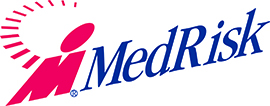
Jul 15, 2024 | Insights
Pushing past psychosocial barriers to injury recovery often takes a more strategic approach to communication with all stakeholders. Understand how effective communication, early identification, and a multi-disciplinary approach are crucial for managing psychosocial barriers to recovery.
Presenter

Webinar Description

Webinar Sponsor
By now, we all understand that psychosocial barriers can impede injury recovery, sometimes quite dramatically. And it’s not an isolated issue. More than 40% of employees with lost-time injuries have experienced a psychosocial barrier to recovery, according to 2021 claims data from Travelers.
Conversations about these issues are more common today among workers’ comp pros, but injured workers themselves may still be struggling to share the information stakeholders need to help them, thinking of it as personal business unrelated to their injury recovery. Knowing what to ask and how to ask it can help.
In this webinar, you’ll learn about the crucial role each stakeholder plays in managing psychosocial barriers to recovery. Understanding these roles can help set proper expectations and identify where breakdowns may be occurring.
Our expert speakers will also discuss opportunities for improving communication between stakeholders, such as early identification and effective interdisciplinary communication.
You’ll gain insights into effective strategies to improve physician-driven communication, motivational interviewing techniques, and a closer look at the strategies already known to be ineffective.
At the end of this hour, you’ll have a clearer understanding of how effective communication, early identification, and a multi-disciplinary approach are crucial for managing psychosocial barriers to recovery.
Intro by

Register Now

Jul 15, 2024 | Insights
The rise of Big Data has allowed for the early identification of at-risk workers comp claims, but siloed data has long been an obstacle. Effective data sharing is now allowing workers comp professionals and providers to leverage data as a fundamental driving force to transform the injured workers experience – claims scoring is part of that transformation.
Presenter

Webinar Description
This webinar will address claim scoring in depth, and its pivotal role in addressing at-risk claims. You’ll learn how clinical pathways can streamline workflows and help the most important stakeholder — the patient.
Discover the importance of claim scoring and how it assesses severity and potential barriers to recovery. Understand the significance of identifying at-risk claims early to minimize losses and streamline the claims process.
Explore the benefits of utilizing clinical pathways to ensure consistent decision-making and optimal claims management. Learn how these strategies drive efficiency and help the patient navigate their workers compensation physical medicine journey.
Our experts will discuss how real-world examples of scoring methodologies and clinical pathways can enable informed decisions, streamline workflows and successful patient outcomes.
Don’t miss this opportunity to optimize your claims management, improve efficiency and achieve better outcomes. Register now to unlock transformational change within your claims operations.
Intro by

Register Now
“The Winning Formula: Claim Scoring and Clinical Pathways for Better Patient Outcomes.” RiskAndInsurance.com, https://riskandinsurance.com/on-demand-webinar-the-winning-formula-claim-scoring-and-clinical-pathways-for-better-patient-outcomes/

Jul 12, 2024 | Insights
As workers’ compensation tries to better understand how biopsychosocial factors influence recovery, industry professionals may want to consider how age and mental health conditions influence physical therapy.

Over the last few years, the workers’ compensation industry has been considering how factors like age or mental health affect recovery, but few have attempted to quantify how these factors affect claims in terms of how many additional visits a patient struggling with comorbidities may need.
“As all that information is gathered, it paints this picture of their recovery,” said Brian Peers, vice president, clinical services for MedRisk.
Recovery from musculoskeletal injuries in particular can be affected by outside factors. Older workers might need more physical therapy visits than younger workers, for instance. Those struggling with mental health conditions might avoid going to visits, causing recovery to drag on for longer.
To better understand how these factors are affecting physical therapy, MedRisk has turned to claims data they have amassed over decades in the workers compensation industry. Data can show how many more physical therapy visits older workers tend to need, and it can help payers and providers understand how mental health conditions affect claims.
Quantifying How Age Affects Recovery

Brian Peers, Vice President, Clinical Services, MedRisk
Workers’compensation professionals know that older workers taken longer to heal compared to younger employees, but many have not quantified how this affects physical therapy utilization. Older folks may need more physical therapy appointments to achieve the same outcomes.
As the workforce ages — 39% of the workforce is expected to be older than 55 in 2026 — preparing for how age affects recovery will be an important step for workers’ compensation professionals.
“Most people in the industry would assume that with advanced age comes complexities, longer duration of care, or delayed return to work,” Peers said, but many believed the connection was a bit “nebulous” and difficult to quantify. New research from MedRisk has found that injured workers older than 56 have 21% more physical therapy visits than those younger than 55. Peers estimates that after 55, workers will need an extra PT visit for each decade of age.
“What we found is it is maybe a little more predictable than what maybe we would have thought,” Peers said. “There seems to be a direct correlation between the decade of your age and the amount of time that you spend in physical therapy for your injury.”
By understanding the connection between age and the number of physical therapy visits, physical therapy providers can help set expectations and help ensure a good provider match
In today’s world, where it’s easy to turn to the internet after receiving a diagnosis, many workers may have encountered inaccurate information about their recovery or they might have found articles geared toward younger people. When they don’t recover in the timelines they might find online, they could become frustrated, further complicating their treatment. Physical therapists can prevent these issues by communicating with workers about how age impacts recovery.
“A lot of it is really calibrating the expectations to align somebody and position them very well for the rehab process,” Peers said.
Mitigating Mental Health Concerns

Aubrie Cunningham, Senior Vice President, Business Intelligence and Analytics, MedRisk
Frustration is just one emotion that can complicate claims. Conditions like anxiety or depression might influence an injured workers’ recovery. After an injury, a worker might be anxious about recovering or getting back to work, so they can feel financially secure.
A loss of function — even a temporary one — could cause a worker to feel depressed. Fifty percent of injured workers experience depressive symptoms during the first month after their injury, according to MedRisk’s 2023 Industry Outlook.
As with age, these factors can cause a worker to take longer to recover and utilize more physical therapy sessions than someone who may not be experiencing depression and anxiety. Per MedRisk’s report, injured workers with anxiety have 7% higher physical therapy utilization than those without.
Physical therapy providers, who often meet with patients frequently, are in a great position to assess whether a patient is struggling with mental health concerns and determine how those factors are impacting recovery.
“There’s a lot of opportunity to gather the type of intel that’s needed to really paint a picture of what might be going on in these cases,” Peers said.
“You’re spending a lot of time getting to know someone, engaging in how this is impacting their life, how it’s impacting their financial situation, their relationships at home, their relationship with their coworkers.”
Once a provider understands if a worker is struggling with depression and anxiety, they can try to mitigate it by easing fears about the recovery process and assuring the injured worker they will heal, even if they’re struggling with PT exercises or feeling pain in the moment. That additional support during the process can go a long way in shifting recovery outcomes.
“There’s things that can be done when you know that there’s anxiety and depression to be able to craft treatment programs that with evidence-based guidelines to account for these things that provide the type of support that someone might need as they work through the rehab process,” Peers said.
A Partner Suited for Today’s Risks
MedRisk uses their extensive claims data to identify the best providers for a particular case, helping improve recovery outcomes. They consider a provider’s experience with different types of injuries, how they work with workers from different industries and their record of helping employees return-to-work.
“We’re able to leverage all that data that we have to be able to say that we can find the best provider for an individual case,” said Aubrie Cunningham, MedRisk’s senior vice president of business intelligence and analytics.
Once a provider is selected, MedRisk supports them throughout the claim’s process. If outside factors, like age or mental health, are impacting a claim and delaying an injured worker’s recovery, MedRisk’s team of physical therapists will step in and help the provider make a plan to get things back on track.
With over 27 years in the business, MedRisk is uniquely positioned to help clients manage physical therapy challenges that could arise from age and mental health-related concerns. The company draws on their extensive experience to create solutions that support patient recovery and improve outcomes.
The firm scores the potential risks associated with individual claims and makes recommendations for recovery. Their system is able to rapidly gather claims insights and share them with payers and providers alike.
“Part of our task is to try and make things a little easier for the providers while also making things easier and more convenient transparent for the payers,” Cunningham said. “It’s an opportunity to leverage the data that we’re collecting in a way that can help others make meaningful decisions.”
“Don’t Let These Factors Derail Recovery: Experts Reveal How Age and Mental Health Affect Physical Therapy.” RiskAndInsurance.com, https://riskandinsurance.com/sponsored-dont-let-these-factors-derail-recovery-experts-reveal-how-age-and-mental-health-affect-physical-therapy/

Jul 12, 2024 | Insights
Data can only help improve claims adjusters if payers, adjusters, providers and claimants communicate with one another.

Physical therapist Greg Nichols, president of SPNet, a division of MedRisk, is a self-described “data junkie.” He loves looking at data to identify whether or not an injured worker is making progress toward recovery and using technology to communicate with other stakeholders.
So when a clinician reported that a worker who was six weeks into treatment for low back pain didn’t seem to be improving, Nichols and his team looked at the data, then went back to the patient. It turns out the patient had radiculopathy, an injury where a spinal disc is encroaching on a nerve.
He needed a different course of treatment.
The technological system alerted the claims adjuster, who had authorized another four weeks of PT treatment even though that process wasn’t working. The provider and the claims team then worked together to move the treatment in a new direction.
Effective data collection, communication and technology systems helped keep this worker’s recovery on track.
“It’s a prime example where the clinician picked up on it, the claimant was telling us, but we would have missed it as the process went through its ‘normal’ action without the assistance of technology,” Nichols said. “There needs to be checks and balances throughout the system.”
From payers and claims adjusters to injured workers and their medical providers, workers’ compensation stakeholders are increasingly using data, machine learning systems and artificial intelligence to track claims progress, identifying and addressing obstacles to recovery before they spiral into major issues.
These tools help providers and adjusters alike track whether or not an injured worker is achieving critical clinical milestones.
But when stakeholders work in silos, they may not have access to each other’s data. A provider might flag a potential issue that could prolong a claim without telling the adjuster. An adjuster may know an injured worker is saying they can’t return to work due to litigation over the claim without telling the physician. In both cases, the other party will wonder why a claim isn’t progressing as it should.
“The methods of communication in the past have holes,” said Skip Brechtel, executive vice president of strategic partnerships with CCMSI. “They slow down the process and slow down the identification of issues.”
Automated systems and other tech tools can help address these gaps in communication by enabling stakeholders to share their data more easily. When everyone works together and discloses relevant claims information with one another, it can speed up recovery times and streamline workflows, resulting in a smoother workers’ compensation system for all.
How Data Sharing, AI and Other Tech Tools Improve Claims Outcomes

Greg Nichols, President of SPNet, a division of MedRisk
Medical providers often use clinical or care pathways to measure a patient’s recovery. These tools outline how long it takes, on average, for a patient to recover from a particular injury and detail the treatment steps and milestones they need to meet.
“In a clinical pathway, there are progressive milestones,” Nichols said. “If a milestone is not met, a clinician is trained to try and identify it and either remove the barrier or change the treatment to progress past the milestone to the next milestone.”
Let’s look at a knee injury as an example. A common workers’ compensation complaint, knee injuries that require surgery follow a fairly straightforward recovery path: A worker has surgery, progresses to walking with crutches, and, if there are no complications, patients should be able to put half or more of their weight on the damaged leg within two weeks.
“If in two weeks that milestone or that clinical pathway had not been checked off, then that insight, that data point would show there’s a problem,” Nichols explained.
Real-time data about whether an injured worker is meeting clinical milestones is invaluable to adjusters. When providers offer that data to payers and adjusters, they can all work together to make sure a worker is recovering in a timely fashion.
“We’re looking at the real-time data,” Brechtel said. “The technical specifications are there, but what’s as important is that I’m learning about, does the claimant have a good attitude? Are they making clinical progressions? Are they showing up on time for their visits or missing visits?”
Adjusters, too, have valuable information to offer providers. At the beginning of a claim, they collect all kinds of demographic data, including age, comorbidities, BMI or other biopsychosocial factors that can help the provider create an accurate recovery plan. Adjusters might also use machine learning or artificial intelligence to scan this data and detect any potential red flags that could derail recovery.
“All of those things are critical for a clinician to know before they even start treating that claim,” Brechtel said. “We capture all of this in data fields.”
These data systems can help workers’ compensation stakeholders tackle any issue that could push recovery off track early on in the life of the claim — a system that improves recovery outcomes and helps save money.
“The sooner we know a claimant is falling away from recovery, the sooner we can incorporate interventions to help try and get that claim back on track,” Brechtel said.
Don’t Silo Your Data — Why Stakeholder Collaboration Is Critical

Skip Brechtel, Executive Vice President of Strategic Partnerships, CCMSI
Though tracking claims and sharing data is critical to producing positive outcomes, workers’ compensation stakeholders often work in silos. Adjusters and payers may not know what actions providers are taking. Providers may not impart relevant details from their conversations with injured workers with members of the claims team.
Added to this problem is the fact that providers and adjusters are often communicating using different kinds of language.
“A provider who’s treating a person doesn’t necessarily understand how a claim is administered. They don’t understand the ecosystem and the lifecycle that a claimant goes through. All they see is the body part that’s hurt and the information they’re getting from an injured worker,” Nichols explained. “And I’m not sure that every adjuster would understand that a milestone was not met if I continue to speak in clinical terms.”
Even when stakeholders both articulate and understand their data-driven insights, they can get lost if there isn’t a technology system in place to help them manage these communications. Adjusters might be managing hundreds of different claims and working with dozens of different providers. Claims messages are going to get lost if they’re delivered solely by email.
“They’re getting emails from at least 10 different vendors,” Nichols said. “Can you imagine trying to manage that much information with no structure?”
MedRisk and CCMSI have worked together to create technology platforms that automate some of these communications. When providers log clinical details, they’re automatically entered into an adjuster’s claims file. And the system automatically alerts relevant parties when an issue occurs. “We can automate a lot of those processes,” Brechtel said.
These tools help providers and adjusters communicate clearly, even though one might be speaking in clinical terms and the other in the language of claims.
“Whether it’s artificial intelligence or business analytics, we’ve created some opportunities to communicate over that bridge in a language that makes sense to all stakeholders,” Nichols said.
A Winning Combination: Accelerating Recovery and Creating a Smoother Claims Process
Sharing data and improving correspondence between workers’ compensation stakeholders help improve the process for everyone involved. Per Nichols, the medical community speaks in terms of two “E’s”: Effective and efficient treatment. “Collaborating with our claims professional through technology on that fundamental concept will improve client outcomes and positively impact the injured worker’s experience,” he added.
“We really want to challenge the workers’ comp system to figure out how to improve the experience of our four major stakeholders,” Nichols said. “If you take those four stakeholders and you agree that data is very important as it comes from each of those stakeholders, then you need to act on it.”
MedRisk partners with CCMSI to facilitate communication and data-sharing between providers, payers, adjusters and claimants. The technological services used in this partnership help ensure all parties are conveying critical information to one another and automated systems make sure no detail is missed.
As part of the partnership, they’ve created a PT widget, where clinicians can score a claim’s progress. If a provider marks a claim as zero, it means the worker is recovering as expected. If it receives a higher score, the adjuster knows issues are occurring. They’re also working on systems that make appointment scheduling and other administrative tasks easier for claimants and their adjusters.
“We’re building much easier ways to schedule that next clinical intervention to keep the process going,” Brechtel said.
Each of these mechanisms makes it easier for a claim to move forward. When claims move seamlessly, workers recover faster and claims have better financial outcomes for payers.
“What we’re trying to do really is improve communication between those four key parties to drive better outcomes,” Brechtel said. “When we do that, everybody wins.”
“How Data Can Help Track An Injured Worker’s Clinical Progress, Improving Efficiency and Efficacy in Claims.” RiskAndInsurance.com, https://riskandinsurance.com/sponsored-how-data-can-help-track-an-injured-workers-clinical-progress-improving-efficiency-and-efficacy-in-claims/

Jul 12, 2024 | Insights
Last week, I described a new approach that could transform recovery in workers’ compensation as we know it: Early PT Intervention.
To recap, traditional processes can be slower than we may like. We are familiar with it: an injured worker gets evaluated by an adjuster or nurse, then referred to a physician who may order diagnostics, schedule follow-ups, and finally prescribe physical therapy, where treatment begins. The new focus involves getting an injured worker evaluated by a physical therapist within 14 days of an injury, as documented in a 2020 Workers Compensation Research Institute Study. Even sooner could be better. This acceleration in treatment by a physical therapist has multiple benefits, including less clinic visits, lower dependence on pharmacy, improved recovery times, and lower costs.
So we all know we want to get people to PT faster. But how can we actually do it?
There are two approaches. Depending on the context of the situation, one of both may be what it takes for each program to feel the impact.
Approach 1: Optimizing the Current Process by doing the same thing, faster
Implementing early PT intervention doesn’t necessarily require a complete overhaul of the existing system. Here’s how to expedite the current process and get workers into PT faster:
- Strengthen Relationships: Build stronger relationships between adjusters, case managers, healthcare providers, and physical therapists. This fosters better communication and collaboration, leading to faster referrals.
- Process Mapping: Analyze the current process to identify bottlenecks. Involve stakeholders in identifying delays and brainstorm solutions for streamlining referrals.
- Measure Performance: Track key metrics like time to PT referral and cost per claim. This data will be crucial for measuring the success of implemented changes.
- Continuous Improvement: After implementing changes, re-evaluate metrics to assess the impact on efficiency and cost reduction.
Approach 2: Direct PT Referral: Bypassing the Initial Physician Visit
When a professional athlete suffers a soft tissue injury, they go directly to the training room and start treatment immediately. So why treat employees’ injuries differently? Why not just get them straight to a physical therapist when they get injured?
For low severity, low complexity cases – such as acute low back pain, sprains, and muscle strains – early PT intervention could mean bypassing the initial physician visit. There are multiple ways to structure the program, but one way may look like this: A well-trained triage team assesses the severity of the injury. A patient requiring emergency care or complex medical interventions would still be directed to a physician or hospital first. While a patient with a less-severe injury as described above, would go to a physical therapist to begin treatment well ahead of the 14-day window we measure for success.
It’s important to note that right now this is only possible in states where self-directed referral is allowed. However, marked success in these states could drive legislative change in the remaining states.
The Role of the PT has Evolved to Match this Approach
This new way isn’t possible if you hold a limited, antiquated view of a PT’s capabilities. The scope of practice for physical therapists has expanded significantly. Today’s PTs are equipped to perform detailed evaluations, diagnose musculoskeletal conditions, and even triage patients for additional diagnostics or physician referrals when necessary. This expanded skillset ensures that early PT intervention doesn’t delay necessary medical attention in complex cases.
This Model is Successful Outside of Workers’ Compensation
Triaging patients directly to PT isn’t a new idea. Numerous group health insurance providers recognize its value and reimburse patients for early PT visits. The Department of Defense, for example, has implemented programs allowing patients to bypass initial physician visits and receive immediate PT after injury. In fact, research conducted by the American Physical Therapy Association (APTA), in collaboration with the Joint Base Lewis-McChord Physical Therapy service line showed that the use of early PT intervention saw a reduction of $3.6 million in healthcare costs.
A First Step to Future-Proofing Your PT Program
Partnering with a physical therapy network who understands and advocates for early intervention is a core strategic move that can future-proof your program. Their expertise can help navigate the complexities of implementing earlier PT, measuring success, and ultimately leading to a healthier workforce and reduced costs.
Regardless of which approach fits your organization and jurisdictions the best, embracing a collaborative approach that rethinks triage procedures, adapts claims processing, and prioritizes early PT intervention, offers substantial clinical benefits to patients and financial benefits to the payers. And with the general shift toward more conservative care, earlier PT can add another proactive layer toward success.
 About Brian Peers
About Brian Peers
Brian Peers is a licensed physical therapist serving as MedRisk’s Vice President of Clinical Services and Provider Management. He is responsible for overseeing and ensuring the clinical quality of the MedRisk network. He is board certified as an orthopedic clinical specialist and is recognized as an expert in rehabilitation of the injured worker. Prior to joining MedRisk, Dr. Peers was the owner and operator of an interdisciplinary rehab practice and has held faculty appointments at multiple physical therapy education programs. He has also served as an injury prevention consultant for multiple large corporations and the United States Department of Defense. He holds Bachelor of Science and Master of Physical Therapy degrees from St. Francis University in Loretto, Pennsylvania, an MBA from Louisiana State University in Baton Rouge, Louisiana and a Doctorate in Physical Therapy from the University of St. Augustine, in St. Augustine, Florida.
“Brian Peers: Revolutionizing Recovery: How to actually get injured workers into PT earlier.” WorkCompWire.com, https://www.workcompwire.com/2024/06/brian-peers-revolutionizing-recovery-how-to-actually-get-injured-workers-into-pt-earlier/

Jul 12, 2024 | Insights
Low-complexity, low severity injuries are a silent thorn in the side of workers’ compensation, making up more than a third of all injuries. These injuries, normally back pain, sprains, and muscle strains, can sideline the workforce and slow down productivity. All while sometimes taking much longer to heal than they medically should and driving up costs along the way. However, we have an often-overlooked and underused strategy we can employ for most of these injuries: Early PT Intervention.
We are all familiar with the normal process. Generally speaking, it goes like this: The employee reports the injury and then may speak to a nurse, or is sent directly to a physician. The physician orders diagnostics or follow up visits, then prescribes physical therapy to the injured worker. After the employee is scheduled, treatment begins. From injury to treatment, this process can take far too long.
However, there is a better way. Inspired by physical therapy research inside and outside workers’ compensation, there is a strategy that may seem revolutionary inside our corner of the world: early PT intervention. A 2020 Workers Compensation Research Institute Study says this strategy involves seeing a physical therapist within 14 days of injury. Treatment even earlier may be better for both the injured employee and the overall financial impact of the injury.
A novel approach for Workers’ Compensation, but Not the Rest of Healthcare
Early PT Intervention is not an entirely new practice. Most health insurance carriers outside Workers’ Compensation recognize the value of this method, reimbursing patients for early PT visits. Other carriers, and even the Department of Defense, have employed programs directing patients to skip the initial physician visit and treat with a PT immediately after an injury, all with success.
Research conducted by the American Physical Therapy Association (APTA) reinforces the effectiveness of this approach. A collaboration with the Joint Base Lewis-McChord Physical Therapy service line demonstrated a staggering $3.6 million reduction in healthcare costs by prioritizing Early PT Intervention.
This approach to treatment challenges the conventional process, and some may question physical therapists’ ability to replace an initial doctor’s visit or diagnostics. However, the strength lies in collaboration. Physical therapy training has evolved, equipping physical therapists with the expertise to perform comprehensive medical screenings. They can identify situations that may require additional diagnostics, such as X-rays, MRIs, or referrals to physicians and specialists.
When Early PT Intervention Works Best
Not all musculoskeletal injuries can be referred to Early PT. In a spectrum of cases, the majority of cases that are low on complexity and severity can be helped by Early PT Intervention, primarily soft tissue injuries.
For example, lower back pain often responds exceptionally well to targeted exercises, posture correction techniques, and ergonomic education. A 2020 Study by the WCRI says that for workers with low back pain, early initiation of PT (as defined by WCRI) is associated with lower utilization, lower costs and shorter duration of temporary disability.
While painful and requiring recovery, common soft tissue injuries such as sprains and strains are no match for classic recovery techniques, including early mobilization and strengthening strategies. These respond best to a combination of rest, ice, heat, stretching, and strengthening exercises.
The benefits of Early PT? Undeniable.
Faster Recovery: Minimized delay between injury and treatment translates to faster recovery and a lower risk of complications.
Enhanced Recovery Protocol: Physical therapists assess the injury, craft personalized treatment plans, and guide workers through the recovery process, ensuring optimal healing.
Expedited Return to Work: By promoting faster healing and pain management, physical therapists accelerate workers’ return to their crucial roles
Lower Costs: Shorter treatment periods, fewer interventions, and faster return to work translates to a financial win. Early PT Intervention can help contain costs for both workers and employers.
A New Era for Musculoskeletal Care in Workers’ Compensation?
For those embracing the idea, the future looks bright, with a potential shift towards integrating physical therapists as primary care providers for the right musculoskeletal injuries. However, evolution will require further collaboration between PTs, physicians, employers, and carriers to guarantee optimal patient care and a streamlined healthcare system.
 About Brian Peers
About Brian Peers
Brian Peers is a licensed physical therapist serving as MedRisk’s Vice President of Clinical Services and Provider Management. He is responsible for overseeing and ensuring the clinical quality of the MedRisk network. He is board certified as an orthopedic clinical specialist and is recognized as an expert in rehabilitation of the injured worker. Prior to joining MedRisk, Dr. Peers was the owner and operator of an interdisciplinary rehab practice and has held faculty appointments at multiple physical therapy education programs. He has also served as an injury prevention consultant for multiple large corporations and the United States Department of Defense. He holds Bachelor of Science and Master of Physical Therapy degrees from St. Francis University in Loretto, Pennsylvania, an MBA from Louisiana State University in Baton Rouge, Louisiana and a Doctorate in Physical Therapy from the University of St. Augustine, in St. Augustine, Florida.
“Brian Peers: The Overlooked (and incredibly effective) Soft Tissue Recovery Strategy” Workcompwire.com, https://www.workcompwire.com/2024/06/brian-peers-the-overlooked-and-incredibly-effective-soft-tissue-recovery-strategy/

















